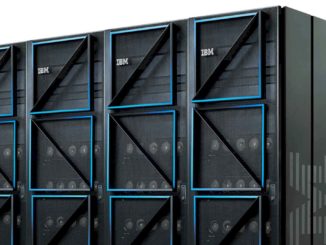
When Red Hat began building out its OpenShift cloud application platform more than five years ago, the open source software vendor found itself in a similar situation as others in the growing platform-as-a-service (PaaS) space: they were all using technologies developed in-house because there were no real standards in the industry that could be used to guide them.
That changed about three years ago, when Google officials decided to open source the technology – called Borg – they were using internally to manage the search giant’s clusters and make it available to the wider community. Thus was born Kubernetes, the software container management system that has become hugely popular in datacenters as administrators in HPC and hyperscale environments and larger enterprises push to gain control of their sometimes-chaotic distributed computing environments.
Kubernetes, along with the Docker container technology, gave Red Hat and others the standards for such tasks as application processing and scheduling that they could use as the foundation for their PaaS efforts going forward. For its part, Red Hat spent the next year reworking OpenShift, which had its own way of abstracting resources for applications, and making Kubernetes cluster management and Docker containers the foundation of the platform. The company debuted the new-look, Kubernetes-based OpenShift 3.0 last year, and has aggressively built out the capabilities since, with several updated versions released since then that have kept pace with the developments from the Kubernetes project.
“We took the engine out of the car in OpenShift that we built ourselves and replaced it with Kubernetes,” Brian Gracely, director of product strategy at Red Hat, tells The Next Platform, noting that the fast-growing demand for OpenShift since making the move to Kubernetes is a proof point to the open standard’s rising popularity. “I can get the technology in OpenShift, with the ability to do new applications and existing applications, and it supports the standards.”
Red Hat has seen growing adoption for OpenShift. In a conference call in late March to discuss the fourth quarter 2016 numbers, president and CEO Jim Whitehurst said that about a third of the largest deals that the company did in the quarter involved OpenShift. In addition, Whitehurst said that a Red Hat-commissioned study by analyst firm IDC of OpenShift customers found that they saw an average five-year return on investment (ROI) of more than 500 percent, annual benefits of almost $1.3 million per 100 developers, application development lifecycles that were 60 percent faster, and millions of dollars more in incremental revenue for organizations. During the final three months of last year, subscription revenue for Red Hat’s application development-related and other emerging technologies – which includes OpenShift – hit $125 million, a 40 percent increase from the same period in 2015, and revenue for the group accounted for about 20 percent of Red Hat’s overall revenues for the fourth quarter.
Over the past three years, Kubernetes has become a key part of the management tool ecosystem that also includes Mesos, Docker Swarm, and OpenStack. Red Hat is not the only vendor to embrace Kubernetes and Docker. As noted in The Next Platform, other companies, such as Univa, also have made a bet that the future belongs to Kubernetes. Univa a couple of years ago launched Grid Engine Container Edition, and at the same time company officials made the decision to focus efforts around Kubernetes.
For its part, Red Hat this week continued its build out of OpenShift Container Platform with the release of version 3.5, which touched on such key demands for greater support for legacy applications and more container security. Unlike some hyperscalers, enterprises have broad array of legacy applications that they have invested millions of dollars in that they want to continue running in an increasingly cloud-centric world, and are looking for a single platform to manage both legacy and newer, cloud-native applications.
“In a very large percentage of discussions we have with customers – and these are Fortune 500, Global 1000 companies – they typically tell us that that 80 to 90 percent of their infrastructure is there to support legacy applications,” Gracely said. “They say, ‘We need to find a way to modernize that portfolio.'”
To expand OpenShift’s capabilities in this area, OpenShift 3.5 includes a tech preview of Kubernetes StatefulSets. OpenShift already brings such features like integrated storage orchestration to traditional stateful workloads like SQL databases and messaging queues. With StatefulSets, OpenShift includes other features, including scaling and declarative health management to enable them to run in containers rather than on physical servers or virtual machines. In addition, version 3.5 includes a new Java container image for cloud-native workloads, building on the Java support the platform already offers for traditional Java EE applications. Security has been improved through enhanced certificate management to ensure that only authorized users and components can take actions in a Kubernetes cluster and better Secrets management for such information like passwords when deploying workloads in OpenShift 3.5.
This is setting the stage for future improvements, Gracely said. Red Hat will roll out several more releases of OpenShift throughout the year that will focus on such areas as hybrid environments and security. The next release will double the platform’s scalability and will include a preview or beta version of a feature designed to enable an enterprise’s datacenter and public cloud environments to look like one system. While organizations are moving more of their workloads to public clouds like Amazon Web Services (AWS), Microsoft Azure and Google Cloud Platform, they also have other applications that they want to continue to run on their own datacenters.
At the same time, being able to manage their datacenter and public cloud as a single system will enable them to more easily run smaller, short-term projects without having to buy servers for their datacenters, Gracely said. They can use what they have already in their datacenters in conjunction with capacity offered in the cloud. Red Hat already offers OpenShift clusters – OpenShift Dedicated – that run on AWS and Google Cloud, with plans to add Azure later this year.
Enterprises also are looking to attract more developers to help them compete with other organizations in their industries that are digitizing their businesses, Gracely said. Red Hat is looking to build out OpenShift to make it more attractive to developers. At the upcoming Red Hat Summit next month in Boston, the company is putting a focus on OpenShift, with more than 80 sessions related to the platform and more than 180 speakers addressing OpenShift. Sessions will include growing core middleware services that developers can use to build applications that sit between or within a Linux container and middleware and reworking existing products to be core services – such as messaging, security and caching – in OpenShift. Other products will be reworked to use these services.





Be the first to comment